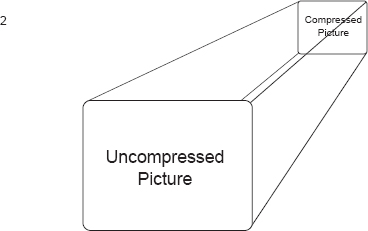Information can be squeezed into a smaller space.
Video Compression
Digital video can take up an enormous amount of signal bandwidth, whether it is going down a cable or being transmitted over the air. Video compression allows that information to be compressed into a smaller bandwidth. When you are dealing with a limited amount of space (or bandwidth) the ability to compress more information into less space is a real advantage.
One great advantage of digital video is that it is much easier to manipulate and modify than analog information. Since the digital video signal is made up of a series of numbers, computer programs and mathematical formulas can be developed to add numbers, change numbers, or subtract numbers, thus adding video, changing video, or subtracting video. This idea is used in the process of video compression.
Compression isn't really an accurate word for what takes place. Compression indicates that a certain amount of information is pushed into a smaller space, and that's not what happens. Actually, compression throws away information. Some compression methods are lossless, which means that the picture quality stays the same. Other methods are lossy which means picture quality is degraded. In reality, since all compression systems throw away information, there is a loss of quality even if you don't see it.
For video there are two parts of the compression process: spatial compression and temporal compression.

Compression is a two step process:
1. Compressing to save bandwidth for transmission.
2. Uncompressing for picture display.

